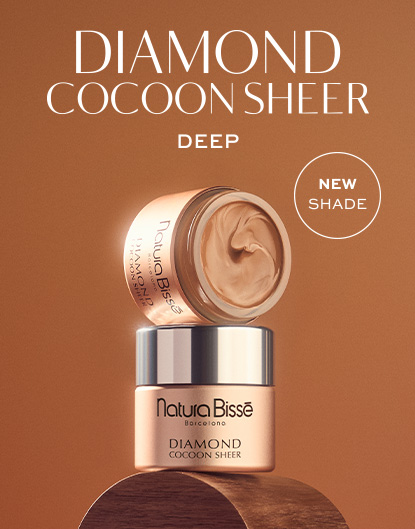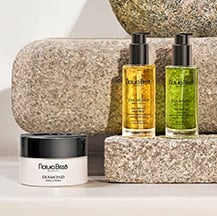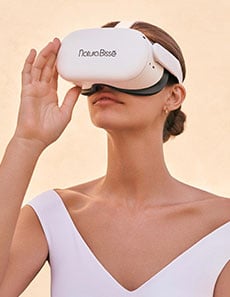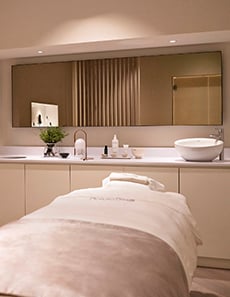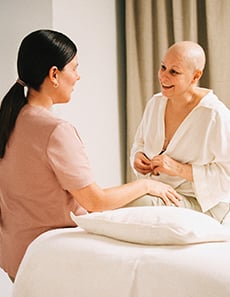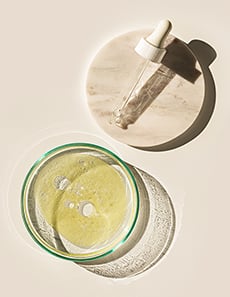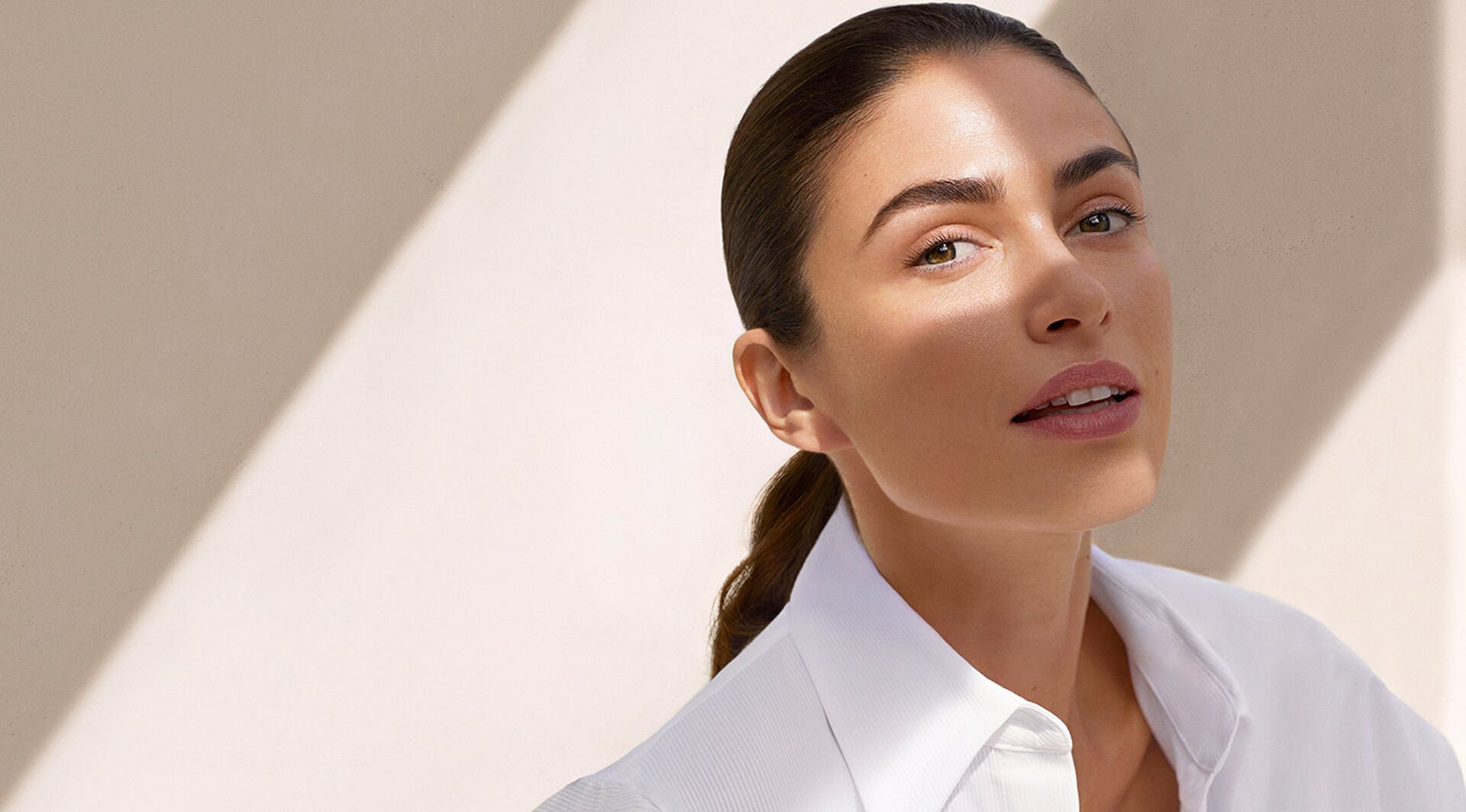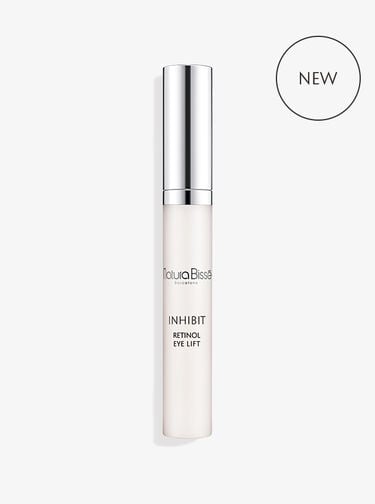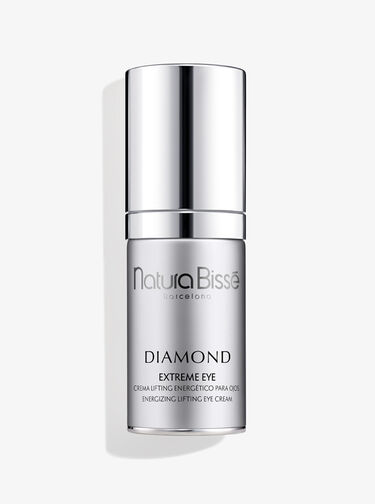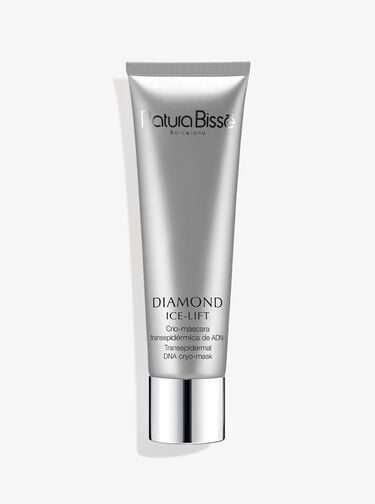"The eyes are the window to the soul" – how many times have we heard this phrase? How much more does this sentiment resonate with us now? In your hands you have a guide that contains updated, useful and very practical information on eye care. It includes interviews with world renowned professionals specialized in plastic surgery, ophthalmology and oncology aesthetics. All of whom share insights and expertise on how to best care for the health of your eyes and show off a more beautiful gaze.

The delicate eye contour is one of the first places to show the signs of aging. We give you all the information you need to understand how and why your eye contour ages. Knowledge is the first step to giving your skin the care it deserves!

1. Flaccidity in the upper eyelid Lack of skin tension causes the drooping of the eyelid. With less collagen and elastin – essential elements for firming skin – this area is prone to sagging. 2. Crow’s feet Dynamic wrinkles at the outer ends of the eye; they are formed by repetitive facial movements, such as smiling. The loss of skin elasticity – caused by age or sun damage – accentuates them. 3. Expression marks under the eye The thinning of the skin – along with less collagen and a weaker hydration barrier – creates premature facial lines.
4. Dark circles Darkening or discoloration of the skin, caused by poor circulation and permeability of blood vessels. They can be hereditary or caused by fatigue, stress, or smoking. 5. Bags Swelling caused by fluid or fat accumulation. They appear gradually and become visible after a certain quantity of fluid or fat. Genetics is its main cause, but also lifestyle, stress, and smoking can play a role in development. 6. Signs of dehydration The skin becomes thinner over time. Also, a low amount of structural components and sebaceous glands hinders the retention of water. 7. Lack of luminosity Dryness, together with signs of fatigue, can make the skin look dull and lifeless.You are invited to discover now the new Inhibit Retinol Eye Lift, our anti-wrinkle eye contour fluid. One ground-breaking formula with 4 benefits. ¿Are you ready?

RELAXES. HYDRATES. LIFTS. BRIGHTENS
To help reduce the look of wrinkles and visibly rejuvenate the appearance of skin, Natura Bissé has created the Inhibit Retinol Eye Lift: a specific solution that helps rejuvenate de eye contour area and fights signs of aging and fatigue, such as expression lines or saggy upper eyelid.




At this point, you might have a lot of questions about the eye care. Don't miss our interviews with world renowned professionals specialized in plastic surgery, ophthalmology and oncology aesthetics.
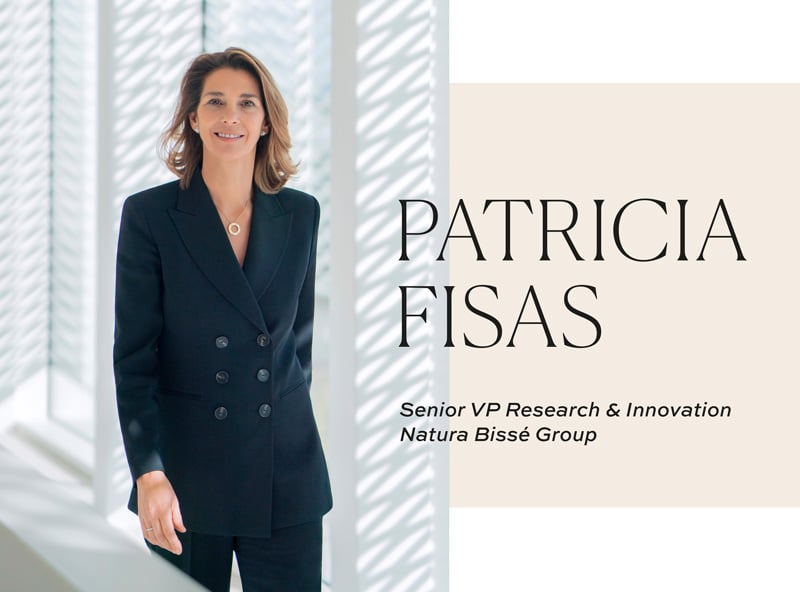
1. Why is it important to take care of the eye contour area? It is one of the first areas that reveal the signs of aging and therefore it is a priority both for women and men. The appearance of bags, dark circles and expression lines is determined mostly by lifestyle habits. However, the genetic factor plays a crucial role, too. As a result, it is extremely important to start taking care of this area as soon as possible. To do so, we must use effective skincare products that are specifically designed for the eye contour.
2. Why does the eye contour age faster? The skin around the eyes is 4 times thinner than the rest of the face. It has less collagen and elastin and fewer sebaceous glands. In addition, it is subjected to more than 10,000 daily blinks and constant movement. It is a delicate area exposed to multiple factors that accelerate its aging. 3. At what age should we start caring for this area? I recommend starting in the mid-twenties, as a preventive way. By treating the eye contour area and providing it with good hydration, we will contribute to prolong its youthful appearance.
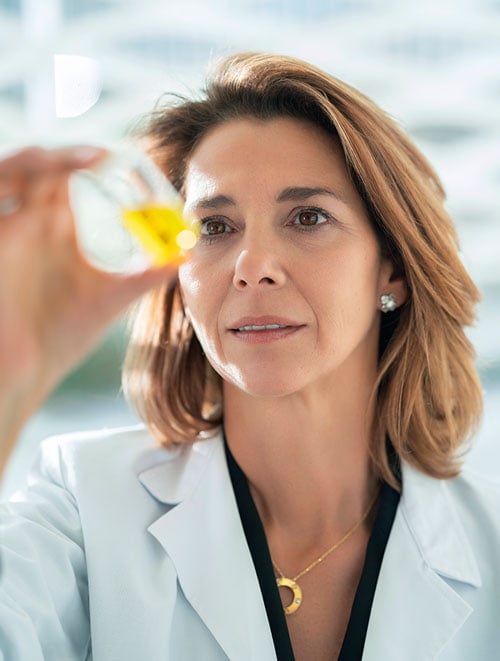
4. How to choose the right eye contour cream? It is important to determine what kind of results are we expecting from it. Also, when are we planning to use the product (day and/or night). From here on, the formulation will be decisive. In addition, the texture is also usually very important when determining whether we like an eye contour product or not. The lightest ones are usually preferred by men and younger skin types. After 40, the creamy texture is normally preferred. If we have sensitive eyes, it will be essential to choose ophthalmologically and dermatologically tested skincare products. 5. What ingredients are most effective for the eye contour? Retinol for example is fantastic to noticeably blur the appearance of wrinkles; Octamioxyl® helps relax expression lines; darutoside, a botanical active ingredient, is ideal helps improve the firmness of the skin and lift the upper eyelid and lastly niacinamide, which enhances luminosity and helps minimize the appearance of dark circles. But without a doubt, it is only the masterful combination of different active ingredients that will determine the overall effectiveness of an eye contour product. I don’t believe in miracle ingredients. 6. Besides the eye cream, what products should complement our eye care routine to improve the results? A daily cleansing ritual with specific products (day and night use) is essential, whether we wear makeup or not. Furthermore, we recommend don’t to forget the area when exfoliating and applying a mask once a week. For those looking to maximize the anti-aging results, adding an eye serum to the skincare ritual is key; its concentrated formula will make a big difference. Lastly, we cannot forget sun protection on a daily basis.
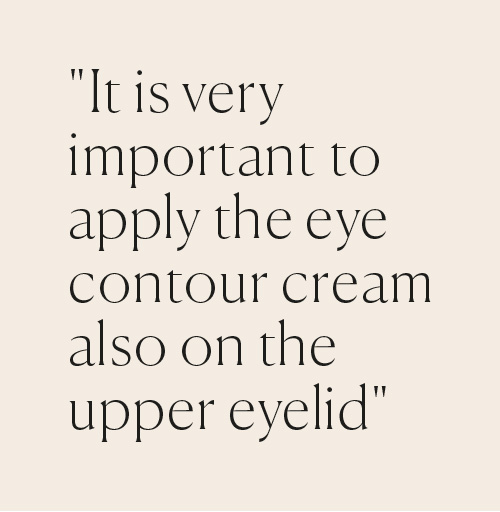
7. What is your best kept secret to maximize the result of the eye contour cream? It is very important to apply the eye contour cream also on the upper eyelid, always with upward movements, bordering the eyebrow. On many occasions we forget this area despite it is essential to maintain a youthful look and improve the firmness of the skin. 8. Does it help to go to the spa or beauty room? Of course, it helps a lot. Our aestheticians’ expert hands will work the area in depth using digital maneuvers that will offer immediate results. If we combine regular visits to de spa with the daily use of innovative skincare products, the wow effect will be amazing. Today, more than ever, taking care of ourselves should be a priority. Enjoying some me time at the beauty room will bring us physical and emotional benefits, thanks to unforgettable moments of pampering, relaxation and well-being. Our recommendation? Visit the spa at least once a month.
9. What are your thoughts on the new Inhibit Retinol Eye Lift? The multifunctional ability of the Inhibit Retinol Eye Lift is amazing. It is one formula with 4 benefits: it helps relax facial contractions that cause expression lines, hydrates and smooths wrinkles, creates a lifting effect on the upper eyelid and enlightens and blends signs of fatigue. Its ceramic applicator adapts perfectly to the eye contour area, allowing a meticulous application and provides a refreshing feeling that helps decongest the eye contour.
NATURA BISSÉ recommends… Use an eye contour product morning and night. Inhibit Retinol Eye Lift will become your best ally at night. Include Diamond Extreme Eye into your morning regime. It is a lusciously rich, multi-action eye cream that firms, energizes and powerfully hydrates while minimizing the appearance of wrinkles, under-eye circles and puffiness. ¿ARE YOU LOOKING FOR EXTRA FIRMNESS AND LUMINOSITY? Enjoy a “me moment” using Diamond Ice Lift once a week. This delicate gel infused mask, with lavender oil, provides an extraordinarily hydrating, tightening and firming effect. It helps beautify the facial contour, diminishing the appearance of wrinkles and evening skin so you look instantly radiant. And remember: to maximize results, don’t forget to combine your at home daily routine with a monthly visit to the facial room. Discover your closest Natura Bissé spa.
INHIBIT RETINOL EYE LIFT Fluido antiarrugas para contorno de ojos
DIAMOND ICE-LIFT Crema de relleno redensificante
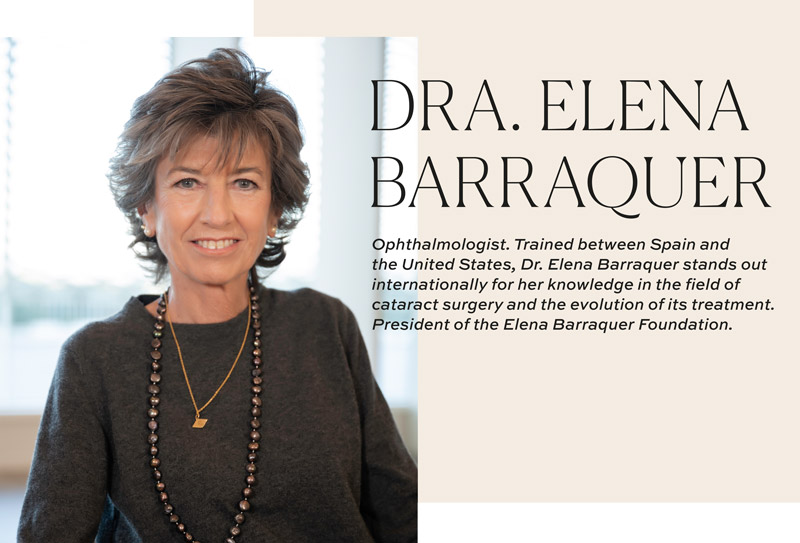
1. Recently due to confinement, we spend more hours in front of digital devices. Does this overexposure affect the sight? Definitely yes. In fact, Dr. Juan Álvarez de Toledo, ophthalmologist and assistant medical director of the Barraquer Ophthalmology Center, estimated that there will be a 15% increase in ocular pathologies derived from the confinement situation and mostly due to the high exposure to electronic devices. This results into young patients having visual problems that are more common in older individuals: dry eye, or conjunctivitis and even increased myopia. Therefore, it is very important to carry out eye hygiene routines.
2. So what advice should we follow if we work in front of the computer or mobile phone? - Limit, as much as possible, screen exposure: If at work we have to spend a lot of time in front of the computer, then we should minimize the use of mobile phones and tablets when at home. - Frequently lubricate the eyes with artificial tears without preservatives (every 1-2 hours or more often if necessary). Do not wait for symptoms to appear to use these tears. - Carry out outdoor activities, since in these situations the distant vision predominates over the near one. - Contact lens users should wear glasses while working with screens. - Apply the 30:30 norm.
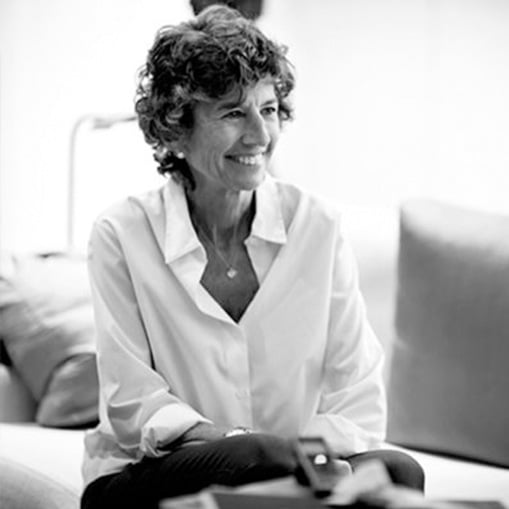
3. What is the 30:30 norm? We recommend taking your eyes off a focused object (screen, book, TV ...), approximately every 30 minutes, for about 30 seconds. This can reduce the visual stress caused by a long-held task. 4. There are studies that show that blue light causes skin premature aging. Does blue light affect our eyes? Do you recommend the use of specific glasses? Blue-light blocking glasses, which attenuate short-wavelength light, are marketed to alleviate eye strain and discomfort when using digital devices, improve sleep quality, and potentially protect against retinal phototoxicity. However, as of today, there is no quality evidence that supports such benefits. Having said that, there is nothing wrong in using them. 5. You mentioned before COVID-19. Can the eyes be a way of transmission? Absolutely. While we have standardized the use of gloves and masks, the eyes remain an unprotected point of contact on many occasions. The World Health Organization (WHO) warns that the main transmission of the coronavirus disease (COVID-19) is carried out through the droplets that the carriers cough up and that also remain floating in the air or deposited on surfaces for some time. If a healthy person breathes them in or touches a surface where the virus is present and then puts his hands on his eyes, contagion occurs. It has also been scientifically documented that the coronavirus disease can be present in the ocular mucosa and therefore can cause conjunctivitis or episcleritis.
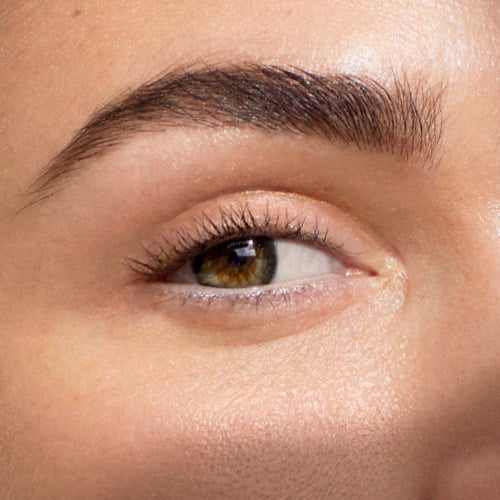
6. How do we minimize risks? We recommend wearing protective glasses (prescription glasses or sunglasses instead) on a day-to-day basis, such as going to the supermarket, going to the pharmacy or walking our dog. And of course, if we live with someone who has been infected. In case of touching our eyes inadvertently, it is advisable to wash them thoroughly using a saline solution or artificial tears in order to eliminate the presence of the virus as much as possible. Besides the general recommendations for hand hygiene and avoiding touching the face, we recommend avoiding the use of contact lenses as much as possible since when using and removing them we must touch the conjunctival mucosa. In. case their use is essential, we will perform a strict cleaning of hands before and after putting them on or taking them off. On this regard, the use of disposable contact lenses for daily use is preferable in order to reduce the manipulation of the eyes.
7. When choosing an eye contour, is it important that it has been ophthalmologically tested? Definitely. It is ideal if it has been ophthalmologically and dermatologically tested for sensitive skin and eyes. This way we will avoid irritation and itching, we will minimize the risk of reactions and we will ensure high tolerance to the product. The skin around the eye is four times thinner than the rest of body’s skin and contains fewer sebaceous glands than the rest of the face. Therefore, it is usually more sensitive to external aggressions. I always recommend using skincare products with light and tested textures. This way we will avoid redness, dryness, itchiness, inflammation, etc.
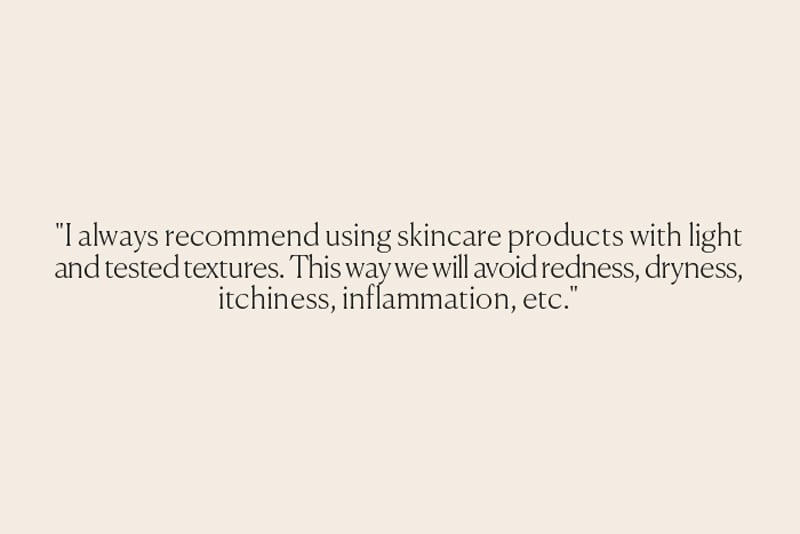
8. In general, how can we take better care of the health of our eyes? It is essential to incorporate a series of habits into our routine, starting when we are children. I often like to summarize them in this decalogue: 1. Visit an ophthalmologist once a year to detect any eye problems and ametropia as soon as possible. 2. Maintain a healthy diet. Vitamins A, C and E, and some minerals such as zinc and selenium among other components present in food are essential for the retina and help delay the aging of the ocular structures. 3. Take vitamins and mineral supplements, especially for the sick or elderly who do not have an adequate diet. 4. Use artificial tears to preserve the ocular surface and also to prevent dry eyes. 5. Wear approved sunglasses with protection against ultraviolet (UV) rays. 6. Don’t rub your eyes. In the event of any discomfort from a foreign body, wash the eyes immediately with plenty of clean water. Never rub your eyes. 7. Practice sports with appropriate glasses to avoid trauma and protect ourselves from environmental factors such as wind, dust and sand. 8. Work in good lighting to reduce eyestrain. 9. Educate children. Teach and inform from a young age. 10. Relax the eye structures following the 30:30 rule.
9. According to a World Health Organization report, blindness rates in developing countries like the Sub-Saharan Africa are eight times higher than in the developed world, largely due to inattention. The Elena Barraquer Foundation acts selflessly in this area for years. Explain us a little more. We are a non-profit organization that fights against blindness caused by cataracts in developing countries. There, 4 out of 5 blind people don’t need to be. In total we speak of about 65.2 million people who are blind from cataracts simply because they live in poverty. The Elena Barraquer Foundation organizes one week-long medical surgical expeditions to remote parts of the world to carry out cataract surgeries in order to restore sight. In the vast majority of cases, a surgery lasting about 20 minutes can restore the vision.

10. How can we support your foundation? Help is always welcome! You can collaborate by making a donation on our website fundacionelenabarraquer.com, by becoming a volunteer, or you can even become our partner. In addition, the Foundation has an online store, called Elena’s Shop, where you can find various products for sale. I encourage you to take a look! 11. And last, after having tried the new Inhibit Retinol Eye Lif, what are your thoughts on it? I love its creamy but light texture, which does not leave greasy skin. Its lifting effect can already be seen after a couple of weeks of daily use. Moreover, although I have very sensitive skin with a propensity to allergies, I have tolerated it wonderfully without any irritation. The Inhibit Retinol Eye Lift is a highly recommended product for those who want to rejuvenate the eye contour area.
NATURA BISSÉ recommends… If you also prefer skincare products created for sensitive and/or sensitized skin and eyes, you will love
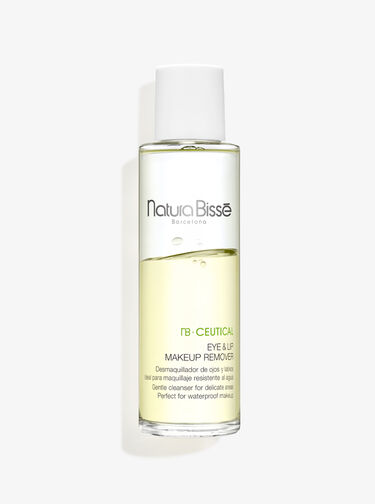
NB·Ceutical Eye & LipMakeup Remover
A two-phase (oil and water) makeup remover which eliminates all types of makeup instantly, including waterproof mascara, eye liner and long-wear lipstick, while leaving no oily residue. What’s more, this delicate, non-irritant cleanser, infused with green tea extracts, induces exceptionally refreshing sensations, particularly soothing to the skin and especially on eyelids.
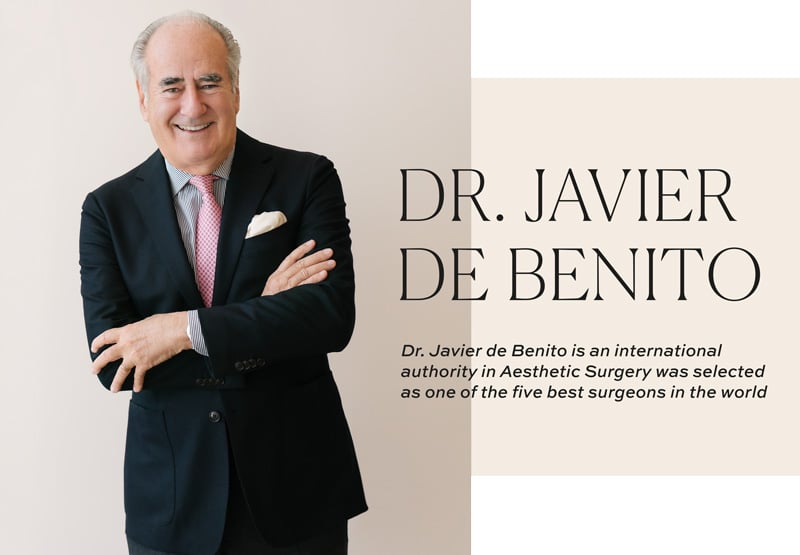
Throughout his career he has been President-Elect of the International Society of Aesthetic Plastic Surgery (ISAPS) and member of the Spanish & American Medical Associations.
1. When talking about the eye contour area, what worries your patients the most? In their twenties patients are worried about under eye bags and dark circles that appear mostly due to hereditary reasons. In their thirties, fat bags appear with some small wrinkles in the outer edge of the eye, called crow’s feet. An excess of skin is also frequently observed in the upper eyelid which is produced, normally, by droopy eyebrows either in its entirety or at the very end of it. Patients in their forties and over are normally worried for the entire area.
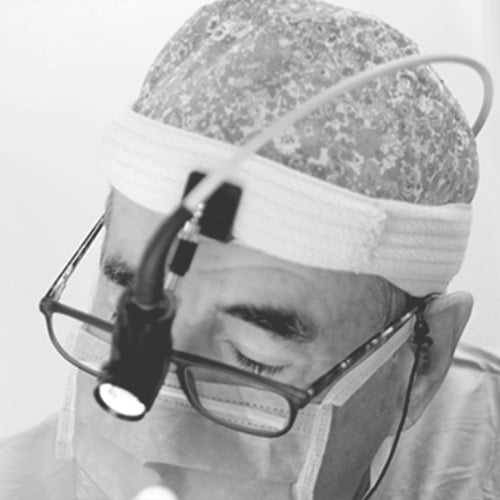
2. Which medical options do we have when our concern is the lower eyelid? It depends on the concern. When undereye fat bags are the main concern the only option for effective results is surgery. Transconjunctival blepharoplasty is recommended in this case as we use it for low eyelid fat excision. We perform the incision from the internal conjunctival so there are no visible scars. If there is also some skin excess that needs to be removed, as long as it is not too much, this surgery might be combined with skincare products and medical devices that will improve the results. When the patient’s problem are dark circles and deep eyelid crease, we will use micro lipo-filling combined with ultrasound medical devices.
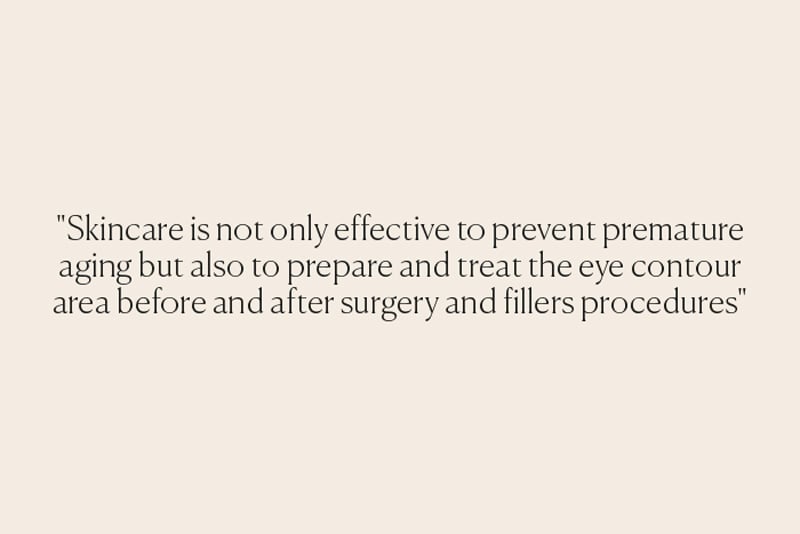
3. Which surgeries are most effective for the eye contour area? Blepharoplasty offers amazing results for the eyelids. When there is a fat excess in the lower eyelid and we wait too long to react, the best solution might be to eliminate it by making a tiny incision under the eyelashes. If the problem is also an excess of skin, through this technique we are able to remove it, too. We can also perform a canthopexy which elevates the external canthus of the eyes. The result is a rejuvenated appearance and beautiful almond eyes. When the concern is excess of skin in the upper eyelid, caused by dropping brows, we should elevate them with mini-invasive procedures based on endoscopic techniques. It is considered an outpatient treatment which allows the patient to go home in just a few hours. 4. Does Blepharoplasty offer definitive results? There is no surgery that can offer definitive results, since aging is an unstoppable process. Nevertheless, depending on facial expressions and genetics, treatments for the eye contour offer usually long-term results.
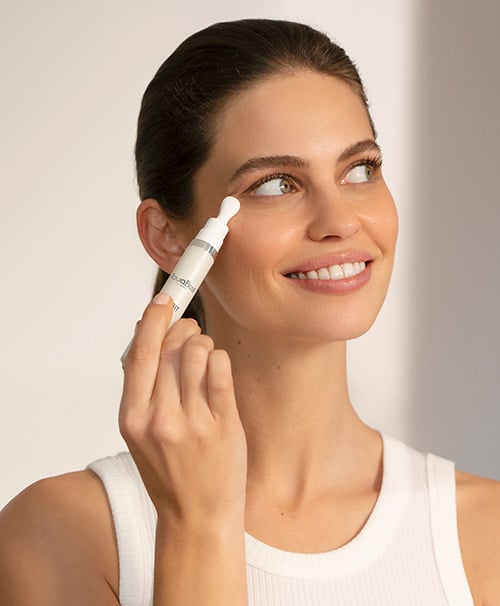
5. How can we optimize results after a surgery in the eye contour area? Obviously, the results will depend on the medical team but arriving to the surgery with perfectly hydrated skin will definitely help. It is also key to keep treating the skin after the medical procedure with effective skincare products as they will contribute to delay skin aging. 6. How is the recovery process? These interventions are performed on an outpatient basis. They do not require general anesthesia and the patient usually recovers in 5 - 7 days. After this period, the swelling and bruising start to disappear.
7. For those who decide not to opt for surgery, what are the most effective non-invasive aesthetic treatments? The botulinum toxin works very well to reduce wrinkles and crow’s feet but also to elevate the eyebrow tail. Hyaluronic acid fillers, peels or lasers are ideal to improve the color of dark circles. 8. How is the recovery process in this case? After using fillers, patients can return to their normal life immediately. We just recommend to avoid lying down after the session in order to prevent the diffusion of the toxin. Exercise and steam baths should be avoided during the first 24 hours. Also, to treat possible hematomas, use skincare products that incorporate calming ingredients, such as calendula.
9. Are there any contraindications or dangers? Fillers are not recommended during pregnancy or lactation, for example. Also, exceeding its use and not resorting to expert hands can lead to undesirable effects such as an overfilled face, lack of expression, etc. In order to maximize results, it is recommended to space the sessions by using effective skincare products daily. Doing so, we will be able to prolong the effects of dermal fillers.

10. Is skincare a good ally in preventing premature aging of the eye contour area? Absolutely, when we choose innovative, ground-breaking formulas. Skincare is not only effective to prevent premature aging but also to prepare and treat the eye contour area before and after surgery and fillers procedures. The more hydrated the skin is, the better the results; the eye contour area will definitely look more natural and visible signs of aging will take longer to appear.
11. What are your thoughts on the new Inhibit Retinol Eye Lift? For years, the Inhibit Collection by Natura Bissé has shown us surprising benefits on face and especially neck. The new Inhibit Retinol Eye Lift goes one step further and becomes a turning point in eye contour care, for its effective results on the crow’s feet and the lower and upper eyelids. In addition, it helps to prolong the effects of the periorbital botulinum toxin and contributes to boost collagen production, helping to smooth the eye contour. I would highlight the impressive design of its applicator, which assures its effectiveness and safety.
NATURA BISSÉ recommends…
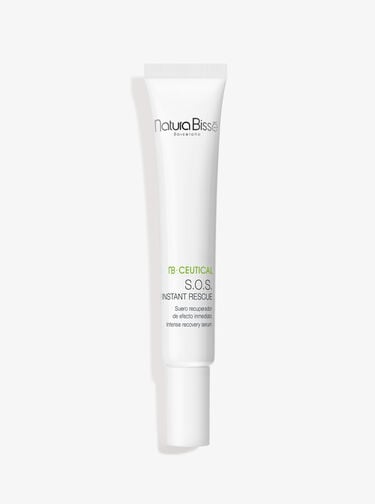
NB·Ceutical SOSInstant Rescue
is an effective solution that instantly helps restore damaged, sensitive skin. With soothing active ingredients like Phytocután® (extract of calendula), specifically developed by medical experts for this skin’s needs, the serum activates in 3 steps: it soothes, reduces discomfort and strengthens the skin protective barrier, all at once. For those recovering from medical-aesthetic procedures such as microinjections, peels or lasers, this is the ultimate treatment for you. Use it one day before your filler session to help accelerate recovery and right after, to help minimize redness, irritation and bruises.* *Do not apply to open wounds. Always ask your doctor

1. For those who are not familiar with oncology aesthetics, what is it and what does it consist of? The side effects on the skin of oncology treatments may seem trivial when compared to the disease itself, but they have a powerful influence on the well-being of those who suffer from them. We are talking about extreme dryness, irritations, constant itching or rashes. Also, the skin may be more sensitive and reactive during this period. Oncology Aesthetics is the specialty that provides the knowledge and the skills needed for the aesthetic care of the skin during the cancer journey so that these side effects do not limit daily activities or the quality of life. It also implies a gain on the person’s well-being, and therefore a better adherence to medical treatments.
2. Why is oncology aesthetics important? The previously mentioned side effects can limit a person’s day to day, whether at work, in family environments or when carrying out daily activities. To be able to combine oncology therapy with daily life, it is important to take care of the skin so that these side effects do not limit the person. For example, extreme dryness on hands and feet can difficult driving and sometimes driving is essential for our jobs. Having so much itching and discomfort on the skin can also affect our sleep quality. In sum, greater well-being means more confidence and a better mood during the illness.
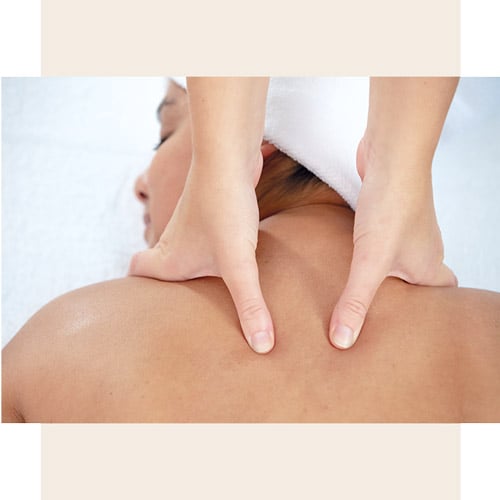
3. Does oncology therapy affect our eyes? - Some types of oncology therapies can cause eye disorders. They vary from one person to another and also depend on the medical treatment. For example, in the case of chemotherapy, drugs not only stop cancer cells, but they can also affect “healthy” cells and prevent them from performing correctly. This is the case of the dry eye syndrome or watery eyes. - In the case of hormonal therapies, drugs such as tamoxifen, that block the action of estrogen, can also cause dry eyes; this can also happen during the menopause. - And, lastly, specific cases such as radiation therapy treatments to the skull, can cause conjunctivitis, skin problems on the eyelids and other eye disorders.
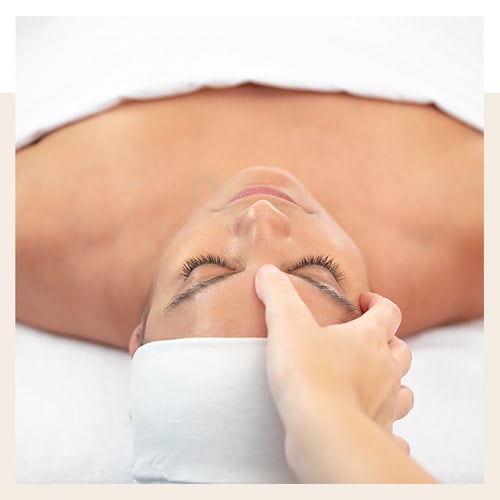
4. What types of eye disorders are most common during the oncology treatments? The most common eye disorders during oncology therapy are usually dry eyes (redness, itching, irritation, gritty sensation, sensitivity to light or pain) and watery eyes. Other side effects such as conjunctivitis, cataracts and other visual disturbances can also appear. In general, these eye disorders will be transitory and mild, but nonetheless they can limit the day-to-day life of those who suffer from them, especially if they are not treated and supervised by an ophthalmologist.
5. What can we do in our day to day to minimize discomfort and risks? a. Avoid dry environments, minimize exposure to heating and use humidifiers. b. Blink frequently to promote the lubrication of the eye. c. Avoid rubbing your eyes since it can make irritation worse. d. The use of glasses is recommended also to protect eyes from the wind and sun. Avoid contact lenses. e. Check with the doctor the convenience of using artificial tears or eye drops (day and night) or even the use of hot water compresses or chamomile on the eyelids. And of course, follow always the ophthalmologist’s recommendations.
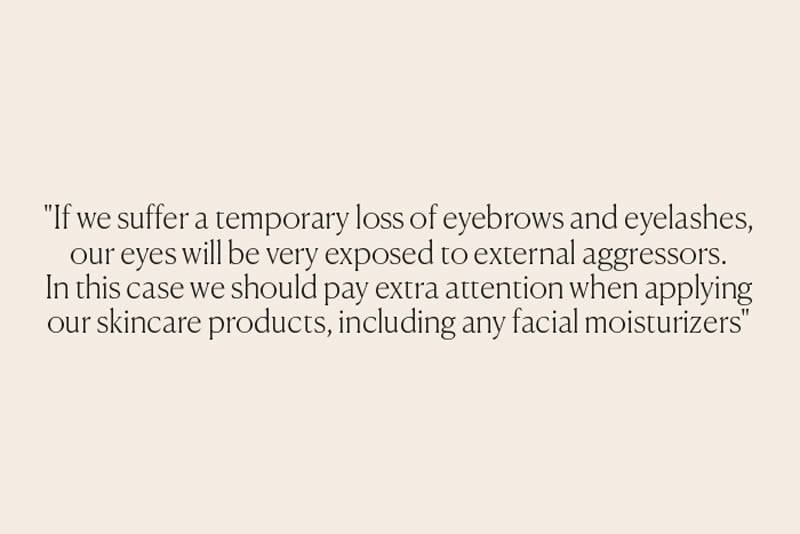
6. What should we consider when carrying out our daily routine of cosmetic care in the eye area? - Maintain a good hygiene on the eyelids, eyelashes and eyelid margin using suitable products for sensitive skin; especially when we have dry eyes. - Since the skin will be more reactive, before applying an eye contour cream or any other skincare product, do always an allergy test in a small area of the body, as for example behind the earlobe. Apply cosmetics with gentle maneuvers and always keeping a safety distance of 2 cm to the eyes both in the upper and lower eyelids. Let’s remember that it is possible that we can lose the natural barrier of the eyebrows and eyelashes temporarily. - We must also protect the eyes as much as possible and follow the ophthalmologist’s instructions.
7. One of the side effects might be the loss of eyebrows and eyelashes. How does this affect the aesthetic care of the area? If we suffer a temporary loss of eyebrows and eyelashes, our eyes will be very exposed to external aggressors. In this case we should pay extra attention when applying our skincare products, including any facial moisturizers. It will be very important to do it with smooth movements and avoiding direct contact with the eyes. Remember to maintain the safe distance. When it comes to eyelashes, there are other side effects that can occur like trichiasis (misdirection of the eyelashes) and trichomegaly (abnormal length). The feeling in both cases is very uncomfortable and it can also affect the eye. In Oncology Aesthetics treatments we usually hydrate the eyelashes and cut them if these conditions appear. This technique must always be carried out by a specialist.

8. In general, how is a conventional professional spa treatment different from one specialized in Oncology Aesthetics? The professional has been trained and specialized in the aesthetic care of the skin during the oncology journey. This implies that this person knows the mechanisms of the disease, the different medical treatments and their side effects. As a result, the professional trained in Oncology Aesthetics can anticipate the needs of the skin at all times, knows which are the most convenient active ingredients and the best protocols to apply them. Furthermore, this person prepares the skin before the treatment, takes care of it during the oncology therapy and recovers it once the medical treatment finishes. When talking about the eye area, it is important to use cleansers specifically formulated for sensitive eyes. They must always be applied very carefully: we will clean the area with gentle touches without rubbing, in order to avoid irritation or pulling out eyelashes if any. Lastly, this professional has also better empathy and communication skills since this person knows more about the different stages of the disease. 9. What can we do in case we have more questions? Visit the Ricardo Fisas Natura Bissé Foundation’s website: www.fundacionricardofisas.org. We will be able to answer any question about Oncology Aesthetics either by phone or live chat and you will also be able to download our selfcare skin care guide while undergoing oncology treatment.
NATURA BISSÉ recommends… During the cancer journey, it is really important to use skincare products specifically formulated for sensitive and/or sensitized skin. The eye contour is no exception.

A good example is NB·CEUTICAL Eye Recovery Cream, which should be applied with gentle movements and following the safety instructions mentioned along the interview.
Thank you for your trust and your willing to go one step beyond your skin care. Our commitment is to accompany you on the path you decide to take so that you can look and feel like never before. If you enjoyed this guide and would like to receive more useful, fun and educational information about skincare, beauty and wellness we invite you to become a new member of the Natura Bissé family by subscribing to our newsletter.
© 2021 Natura Bissé International, S.A. (& Affiliates). All rights reserved. Any reproduction is prohibited. This eye care guide, “The Eye Care Guide”, provides guidelines and recommendations for the care and beauty of the eye area using Natura Bissé® brand products. This guide does not provide medical advice. May be subject to updates.

